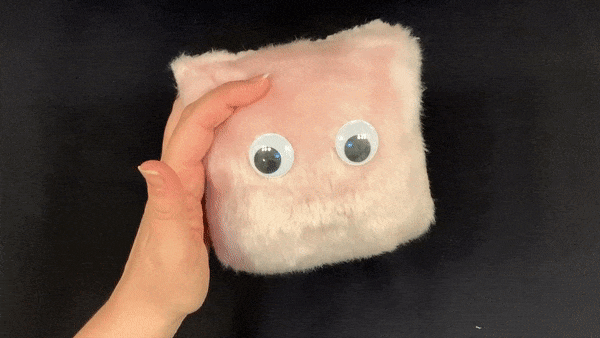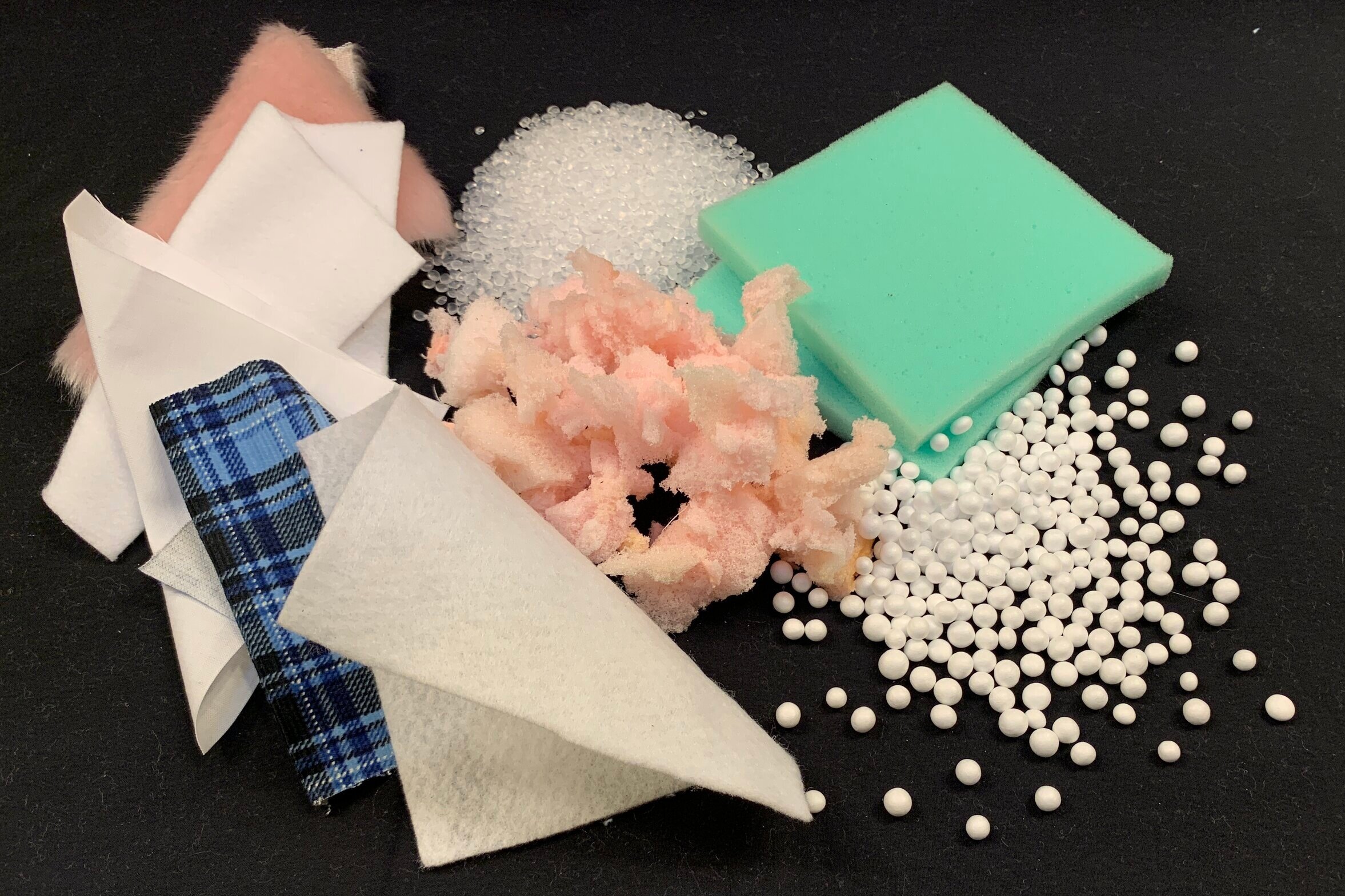The Haptic Beanbag
MS-HCDE Capstone, 2020
Our Human Centered Design & Engineering master’s capstone team formed based on mutual interests in touch-based interaction, e-textiles, and unconventional, screen-free interfaces.
We spent six months (the latter half of which were during the Covid-19 pandemic quarantine) researching, prototyping, and creating a design language for reduced stress haptic interactions. Our project was an experimental and discursive exploration of haptic interaction, with the intent of opening up this under-explored space in the field of HCI. We approached haptic interaction through the lens of stress reduction because we believe that, in the same way that designing for accessibility improves technology for all users regardless of ability, designing for reduced stress similarly improves usability across the board, even for products that are not specifically intended for stress management.
Our early research included comparative analysis of wearable and body-based stress reduction technologies, current practices for haptic interaction design, and interviews with subject matter experts on somatic techniques in mental health, and on haptics in the area of HCI. We conducted qualitative co-design research sessions with remote participants, using household items in their home environments. These sessions yielded data and ideation from our participants about their stress responses and habits in the context of touch, texture, temperature, and motor experience.
Based on our research, we embarked on two concurrent goals: (1) We synthesized our data into a framework for reduced-stress haptic interaction design, and (2) we designed and tested a series of modular, soft, non-prescriptive haptic interaction prototypes based on our framework. Our prototypes and framework followed a Research Through Design methodology: the prototypes were not a product-development process, they were instead used as exploratory tools to test and further inform the subsequent steps in our design framework research.
The results of our project are the documentation of our experimental prototypes and a set of 13 cards detailing our haptic design framework.


